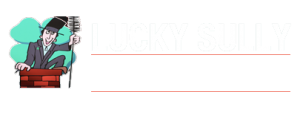Comprehensive Guide to Common Chimney Repairs and How to Spot Them Early
Your chimney is more than a vent for smoke; it’s an essential structure that safeguards your home and keeps it cozy. Like any part of your house, it requires routine maintenance to ensure safety, functionality, and longevity. But how can you recognize when something is wrong, and what are the most common chimney repairs homeowners face?
This guide explores early warning signs of chimney damage and offers insights into solutions. Whether it’s crumbling bricks, rust, or creosote buildup, Lucky Sully Chimney Sweep is here to help.
For expert services, explore our Chimney & Fireplace Repairs to ensure your chimney is always in top condition.
Why Regular Maintenance for Your Chimney is Essential
Chimneys endure extreme conditions, from scorching heat to freezing temperatures, along with exposure to soot and moisture. Over time, this can cause wear and tear, leading to dangerous conditions like structural instability or chimney fires.
Regular inspections are vital to prevent costly damages. They help detect early signs of trouble and keep your chimney functioning safely. Additionally, proper maintenance improves efficiency, ensuring your fireplace works at its best while reducing environmental impact.
Signs Your Chimney Needs Repairs
Spotting problems early can save you from expensive repairs or replacements. Here are the top signs to watch for:
Cracked or Damaged Bricks and Mortar
Crumbling mortar or flaking bricks, known as spalling, is often due to moisture infiltration. This weakens the chimney’s structure, making repairs urgent to avoid collapse.
White Stains (Efflorescence)
Efflorescence, a chalky white residue, is caused by moisture drawing minerals to the surface. While the stains can be cleaned, the underlying water issue must be addressed.
Rust on Metal Components
Rust on your chimney cap or damper indicates moisture problems. Left unchecked, it can lead to functional issues or structural damage.
Water Leaks
Dripping water in your fireplace or signs of water damage around the chimney point to flashing or masonry issues.
Common Chimney Repairs and Their Solutions
Understanding common chimney repairs can help you act quickly when problems arise.
Fixing a Damaged Chimney Crown
The chimney crown, located at the top, protects against water damage. Cracks in the crown can allow moisture to seep in, causing structural deterioration. Repairs involve sealing or replacing the crown to ensure durability.
Tuckpointing Deteriorated Mortar
Mortar holds the bricks of your chimney together. Over time, it can deteriorate, leading to instability. Tuckpointing, or replacing damaged mortar, restores both functionality and appearance.
Repairing Flashing
Flashing is a metal seal between the chimney and roof. When it’s damaged, water can enter your home, causing leaks and mold. Proper repair involves sealing or replacing the flashing.
Cleaning Creosote Buildup
Creosote, a byproduct of burning wood, is a flammable substance that builds up inside your chimney. Removing it through professional sweeping reduces fire risks and ensures safe fireplace operation.
Replacing the Chimney Liner
The liner protects your home from the heat and byproducts of combustion. A damaged liner compromises safety and may need replacement to prevent further issues.
Seasonal Chimney Care for Year-Round Protection
Winter Challenges
Freezing temperatures can exacerbate existing cracks, while snow and ice increase the risk of water damage. An inspection before winter ensures your chimney is ready to handle the cold.
Summer Concerns
Humidity and rain can seep into damaged masonry, accelerating deterioration. Waterproofing your chimney during summer can safeguard it against moisture.
DIY Repairs vs. Professional Expertise
While minor tasks like clearing debris might seem manageable, most chimney repairs require specialized knowledge and tools. Improper repairs can worsen issues or create safety hazards.
Professionals like Lucky Sully Chimney Sweep offer the expertise to identify problems, use the right materials, and perform repairs safely.
Conclusion: Act Early to Protect Your Chimney
Your chimney is vital for home safety and comfort. Addressing issues like cracks, water damage, or creosote buildup early prevents larger, costlier problems down the line.
At Lucky Sully Chimney Sweep, we’re committed to providing top-notch care for your chimney. From inspections to comprehensive repairs, our services ensure your chimney stays in excellent condition.
FAQs
How often should I inspect my chimney?
It’s recommended to have your chimney inspected annually, especially before winter.
Can I clean my chimney myself?
While you can handle minor cleaning, professional sweeping ensures thorough removal of creosote and debris.
What causes chimney leaks?
Leaky chimneys are usually caused by damaged flashing, cracked crowns, or deteriorated masonry.
How do I know if my chimney liner needs replacement?
Signs include visible damage, smoke leakage, or reduced heating efficiency. A professional inspection can confirm this.
What are the risks of ignoring chimney repairs?
Neglecting repairs can lead to structural collapse, water damage, or even chimney fires, endangering your home.









